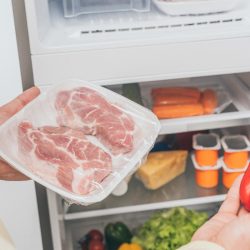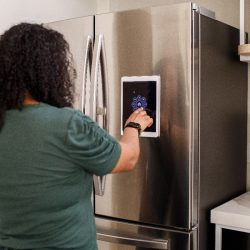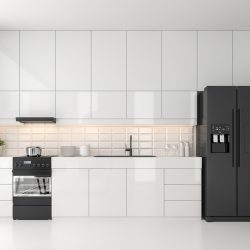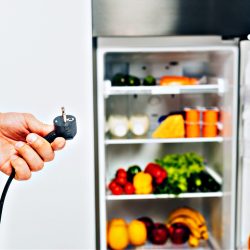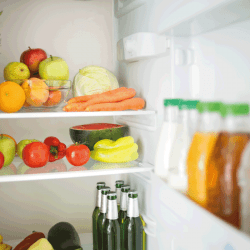Opening your fridge to find frozen drinks and food is a pain. If your refrigerator is on the lowest setting, you are likely at a loss for what could be wrong. To give you the best possible solution to this dilemma, we scoured the most reputable sources on the internet. Check out our findings below.
There are a few reasons why your fridge is freezing your food. These include:
- You may be mistaken and actually have your fridge set on the coldest temperature instead of the warmest.
- Your freezer may be too cold, sending excessive amounts of cold air into the refrigerator.
- You may not have enough food in the fridge, or your vent may not be circulating air properly.
- You may need to clean or replace the condenser coils.
- The door seals may be faulty.
You now know the possible culprits of frozen food in your refrigerator. Stick around to find out how to clean the coils, how to know if you have the unit set on the right temperature, what to do if your freezer section is the cause, and more.
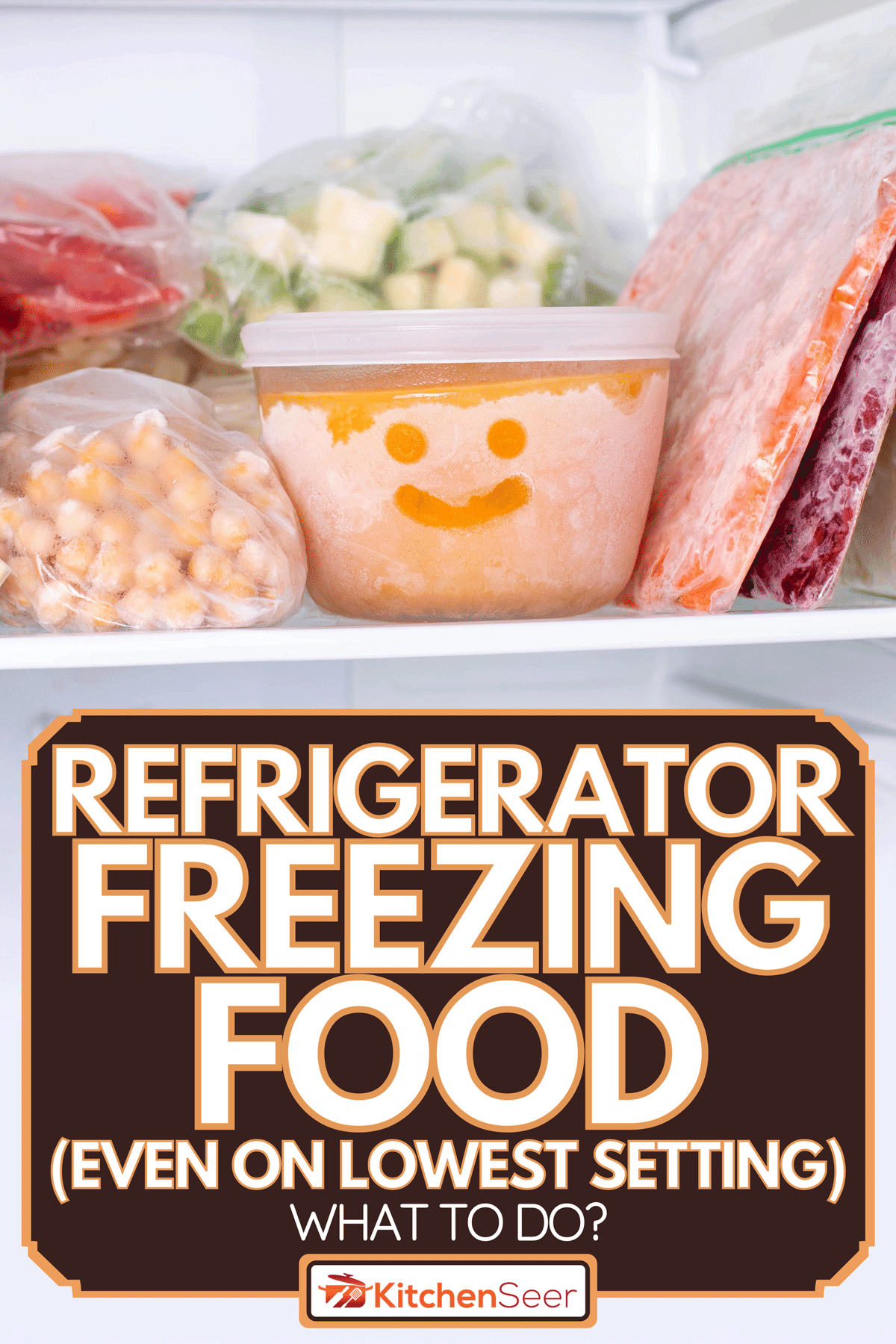
Why Is My Refrigerator Freezing Food?
There are many culprits that could be causing the fridge to freeze your food. Your freezer may be too cold, or you may not have enough food inside your refrigerator.
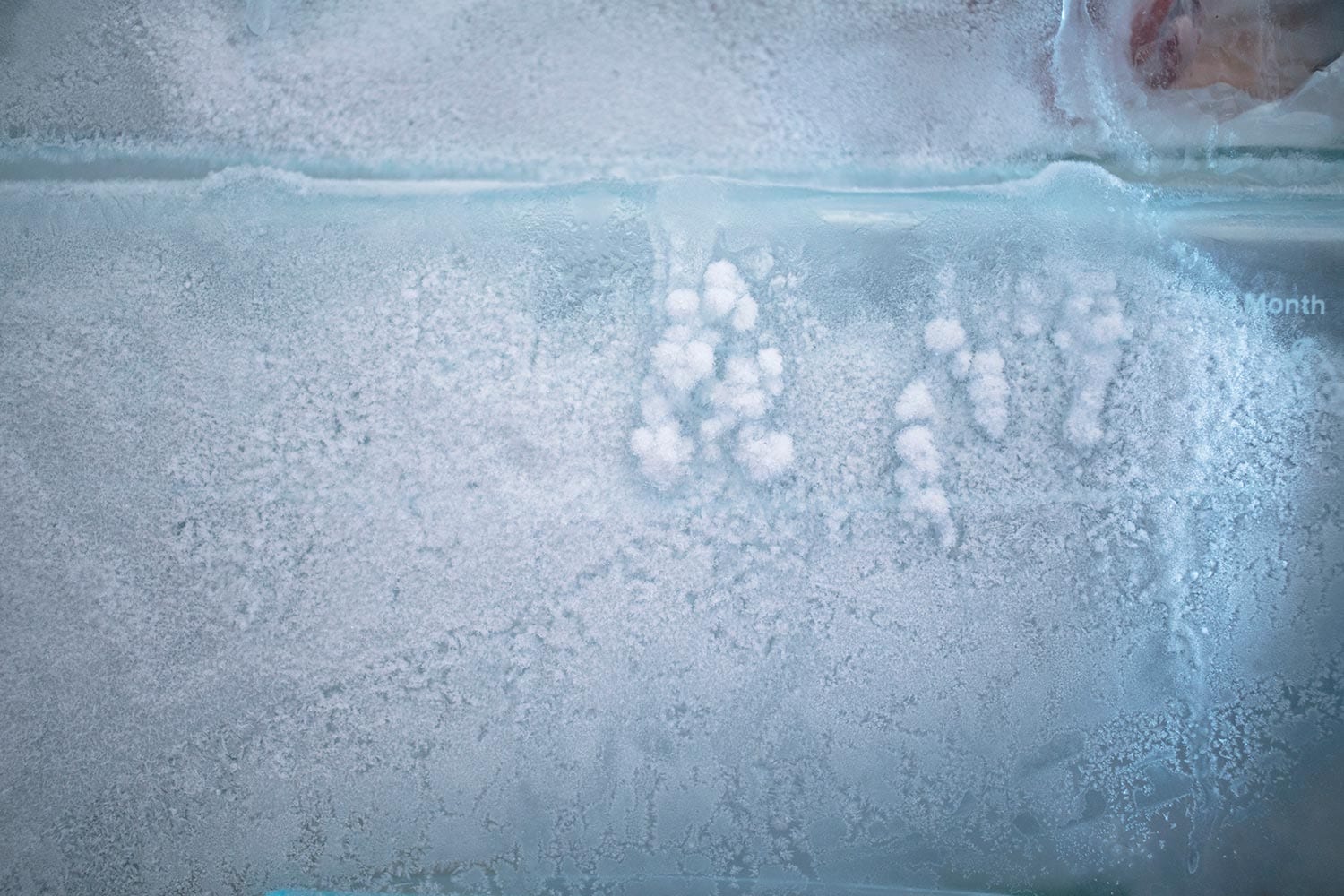
Additionally, the vent may not be properly circulating air inside your fridge. If none of these scenarios fit, you may be facing a larger problem. The coils may need to be cleaned, or they may have malfunctioned. In this case, you will need to either replace the coil or purchase a new refrigerator.
To help you better identify the source(s) of your issue, we'll discuss the potential culprits in greater detail.
Temperature Setting
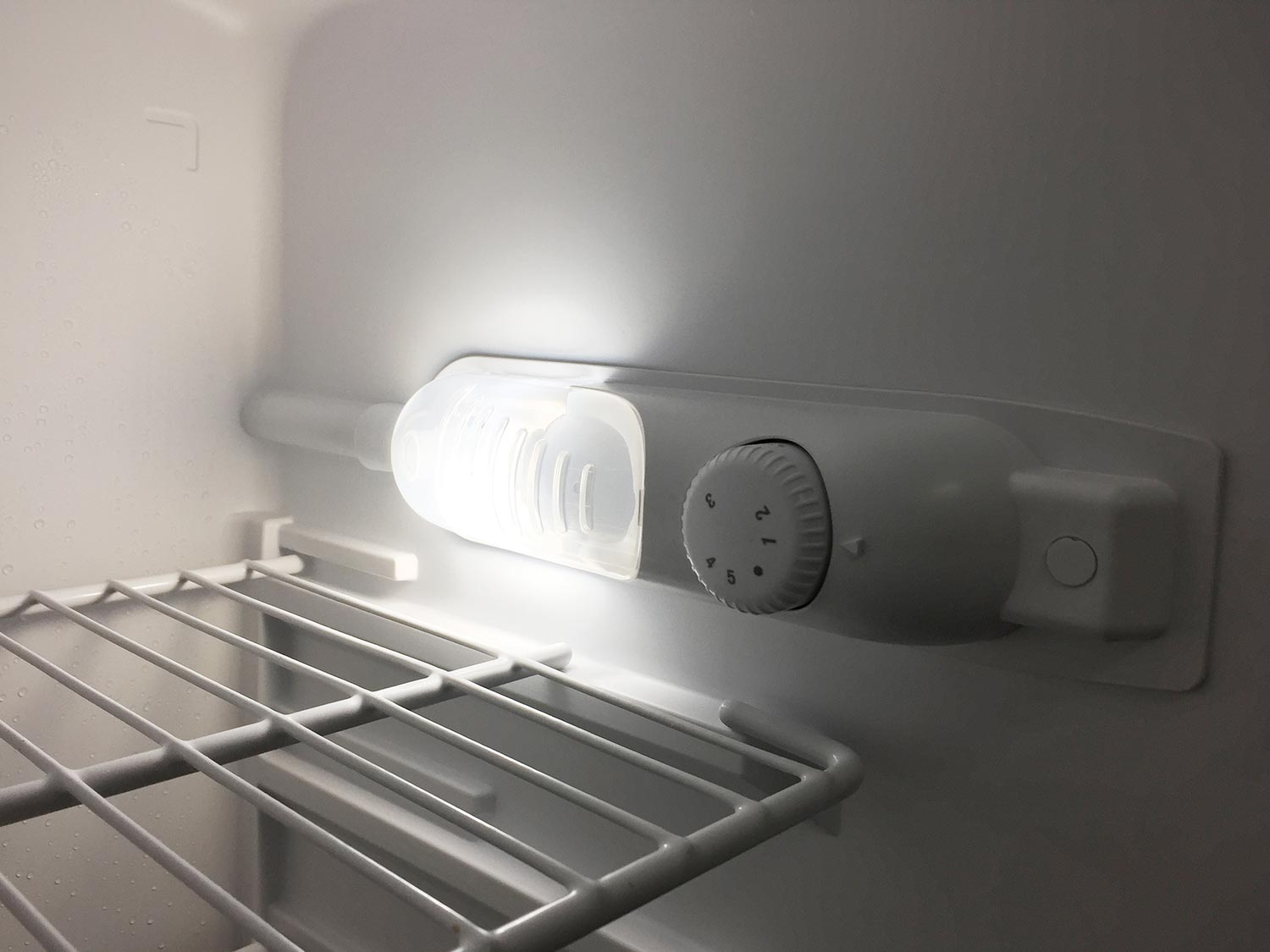
We have already established that you have the fridge on the lowest setting. However, many people misinterpret the numbers on the dial, assuming that zero is the coldest. Just to be clear, if you have a refrigerator with a dial instead of a digital thermostat, zero is the warmest setting, and five is the coldest.
Freezer Section
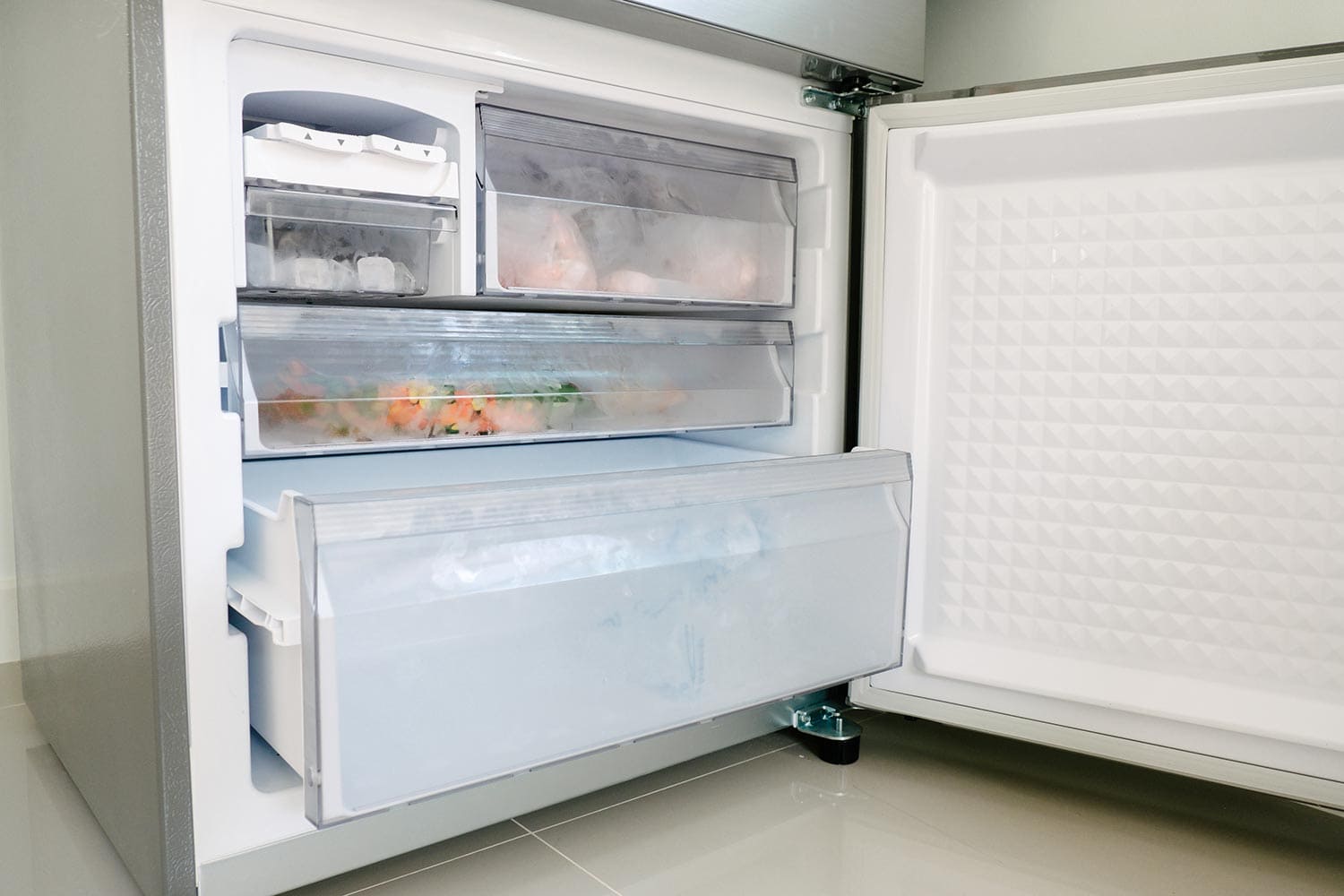
Although it may not seem like the freezer section would affect the refrigerator, that's not always the case. This may be especially true if the freezer is located at the bottom of your fridge. Check the thermostat, adjusting it to about medium coldness.
Do not turn it to the warmest setting; you don't want your food to spoil. Give the unit some time to adjust, and check the contents of your fridge within a day's time. If your food is no longer frozen in the refrigerator and you still have ample coldness in the freezer, there is no need for any further measures.
Inadequate Food Supply
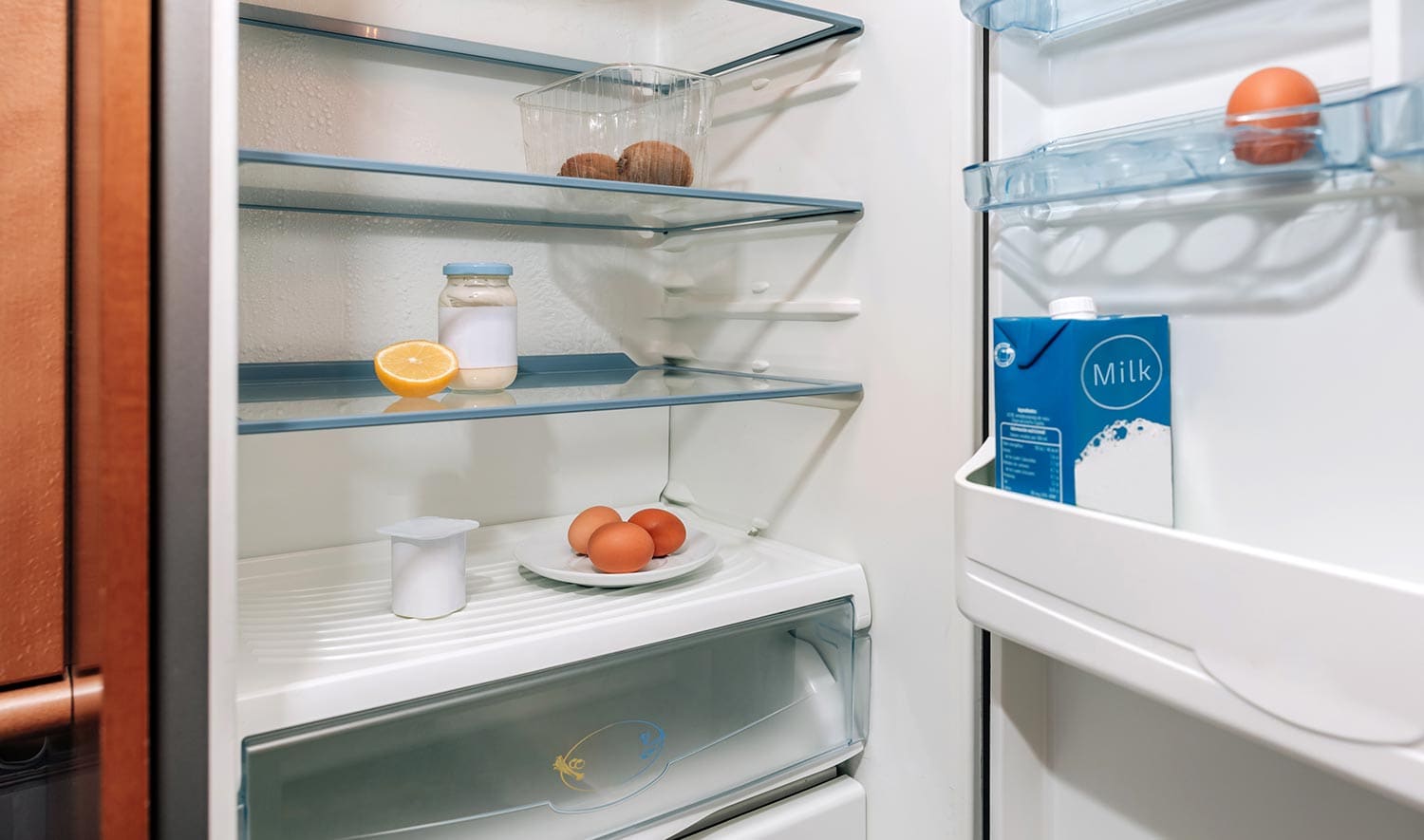
Just as packing your fridge too full can cause it not to cool properly, not having enough food in your refrigerator can cause what little food you do have to freeze.
This is because you do not have adequate substance to absorb the cold air as it circulates. Likewise, if you place food too close to the air vent, it can absorb too much cold air, causing it to accumulate ice.
In a similar scenario, the air vent may actually be the issue. If it is sending too much air to one area of the fridge, those items will freeze. To test this, place your hand in front of the vent, paying close attention to which direction the air is blowing.
If it is blowing evenly across the interior of the fridge, your vent should be fine. However, if it is only blowing in one direction, you may need to clean or replace the vent.
Read more: Do Refrigerators Run Better Full Or Empty?
Dirty Or Faulty Condenser Coils
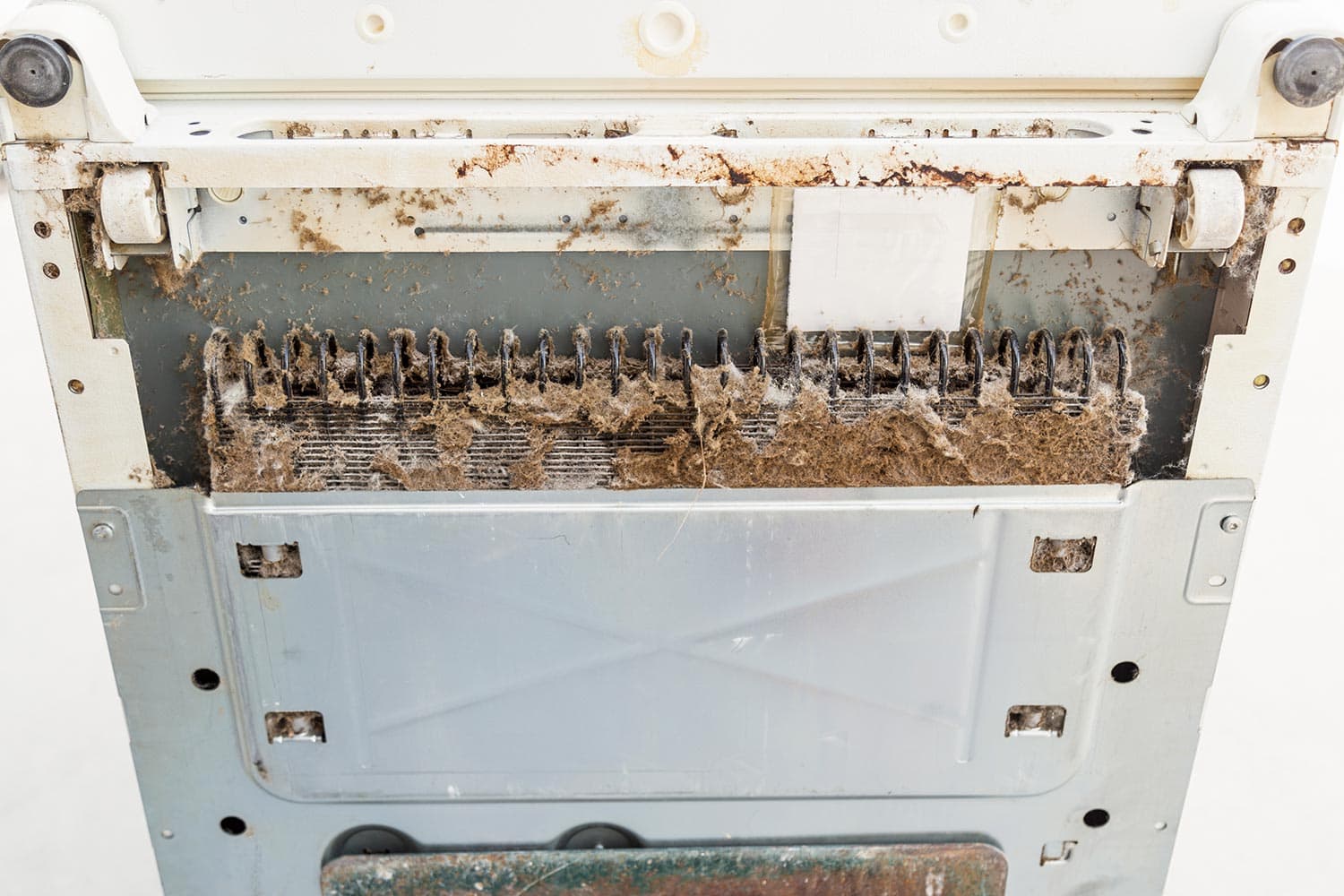
The condenser coils are generally located on the underside of the refrigerator. Therefore, they are highly prone to collecting dirt and dander. To check this, locate the grill at the bottom of the fridge.
Gently remove it with a tug. You will need to bend down to look under the unit. Once you confirm it is dirty, unplug the refrigerator. Now, use a vacuum cleaner and a brush to remove debris from the coils.
Click here to see this condenser coil cleaning set on Amazon.
Plug it back in, and wait several hours before checking to see if the food is frozen. If the problem persists, it may be time to replace the condenser coils or purchase a new refrigerator.
Watch this YouTube video as a visual guide to cleaning your refrigerator condenser coils:
Leaky Door Seals
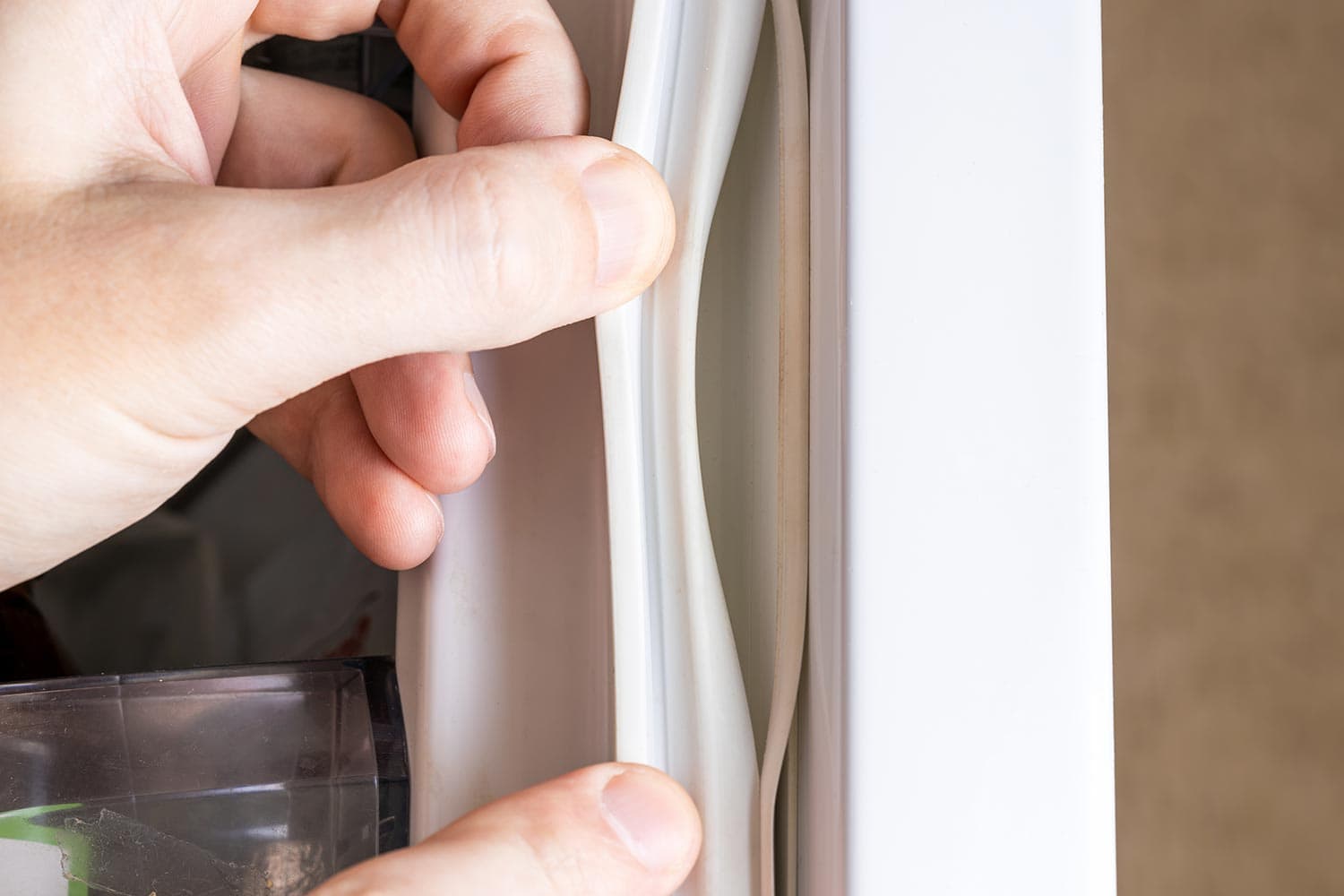
Have you noticed the rubber seals on the inside of the door when you open the fridge? These help create an airtight seal that prevents hot air from seeping in and cold air from seeping out.
It's easy to assume that a leaky seal would cause warmer temperatures in the fridge. However, according to Whirlpool, if the strip is loose or faulty in any way, your refrigerator will have to work harder to create cold air. This, in turn, creates excessively cold temperatures that result in frozen food.
Click here to view this replacement seal on Amazon.
Can You Replace Faulty Condenser Coils?
If the condenser coils have gone out on your refrigerator, you do not necessarily have to replace the entire fridge. Instead, you may be able to replace the condenser coils.
Although it is possible to tackle this project on your own, it is not advisable if you have no handyman experience. However, it is a fairly straightforward process that experienced DIYers should be able to handle.
How To Replace Refrigerator Condenser Coils
Before doing any repairs, make sure to unplug your refrigerator. Pull it away from the wall and into an open area with plenty of space. Next, with the help of a friend or family member, turn the fridge onto its side.
You will see a silver box with springs. This is the condenser coil pack. To the left of where the coils are located, you will see a small box that looks a bit like a tiny barbeque grill. This is the compressor.
You will notice two silver wires connected to the coils. One is attached to the compressor, and the other is attached next to the coil pack. Using a tube cutter, remove both wires.
Next, grab the pack on both sides and tug gently, working it back and forth until it comes out. Now, you will notice a black cord at the back attached with a zip tie. Using a pair of scissors, carefully cut the zip tie. The coil pack will now be free.
Click here to view this fridge condenser coil on Amazon.
Using the old condenser as a guide, find the silver wires on the new coil pack. One is shorter than the other and plugs into the condenser. The longer line plugs into the black compressor.
Before you can replace these lines, you will need to cut them to size using the same tube cutter as before. Gently place the coil pack back into the bottom of the refrigerator. You do not have to replace the zip tie unless you want to. Once you have the lines cut to size, slide them together.
Click here to view this tube cutter on Amazon.
Now, you will braze them into place. For this step, you will need a brazing machine. It is similar to a blow torch, so you should use extreme caution during this step.
Apply brazing flux to the area to be brazed, then melt it together. Once that cools, you are ready to place the fridge back in the upright position and plug it in.
Check out this brazing kit on Amazon.
Watch the following video as a guide to replacing your condenser coils:
How Often Should You Clean Refrigerator Coils?
As a general rule, you should clean your refrigerator's condenser coils approximately once per year. However, if you live in an overly dusty environment or have pets in your home, you will need to clean your coils more often.
Every six months should do the trick, but you will need to check them every few months to make sure they are still in good condition.
How Long Should a Fridge Last?
On average, refrigerators last about 12 years. However, some have been known to last closer to 20 years. If your fridge is an older model, you may find it more beneficial to replace it with an Energy Star model that will save money on your electric bills and help the environment.
Once your fridge malfunctions, it will likely continue to have problems as it ages. At this point, it may be more cost effective to purchase a new unit instead of fixing it every time it breaks.
Final Thoughts
If your refrigerator is freezing your food instead of keeping it cool, there are several things that could be wrong. You may not have enough food in it, or you may be blocking the air vent.
Other issues could be leaky door seals or dirty condenser coils. Using the above guidelines can help you figure out why your food is freezing and help you get your refrigerator back on track.
If you have more questions regarding your refrigerator, check out these other posts on our blog:
Should A Refrigerator Run All The Time?
How Long Should Refrigerator Water Filters Last? [And When To Replace Them]






